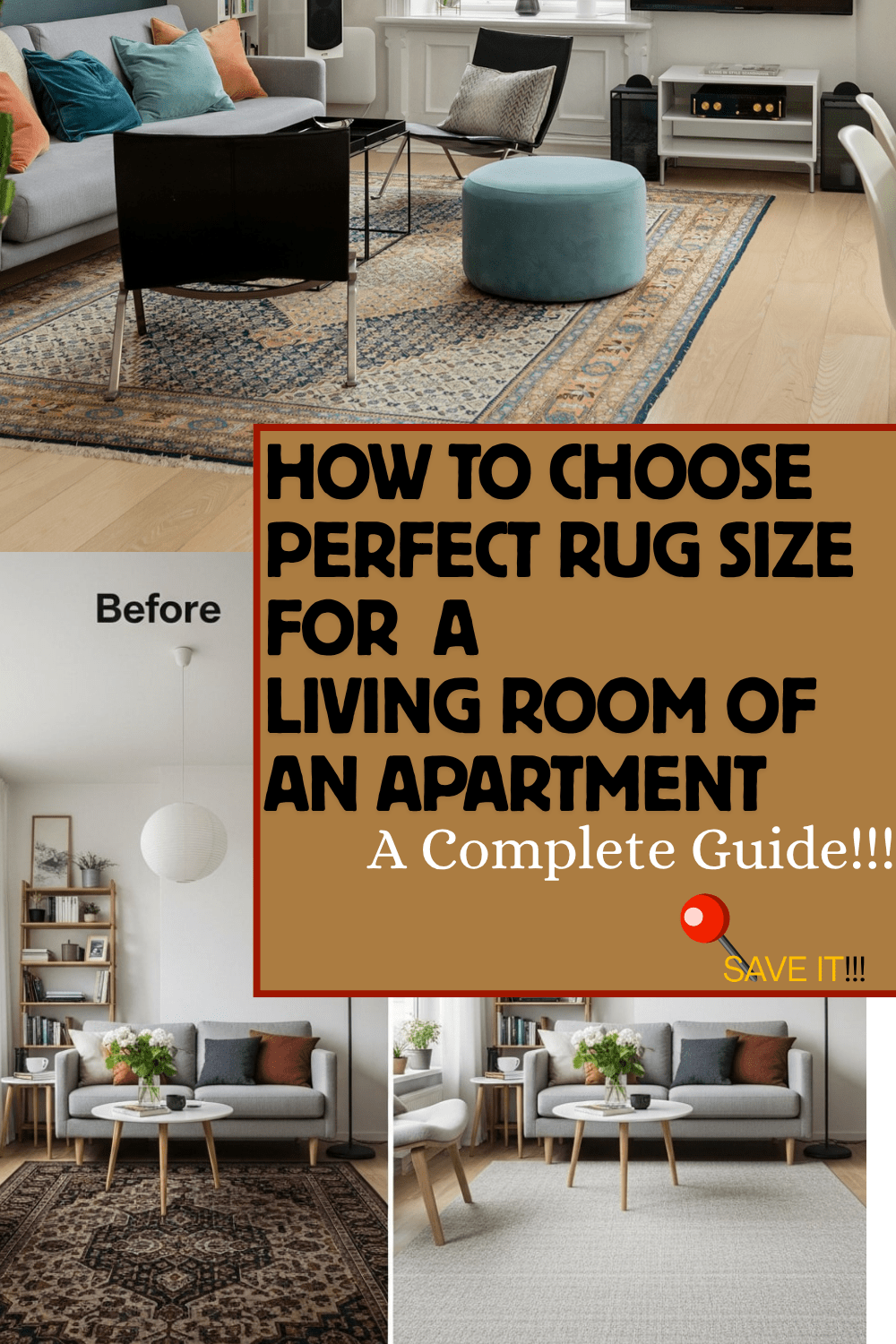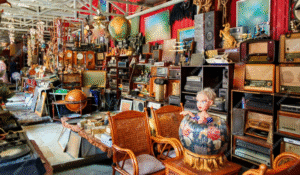Learn how to choose rug size for living room in an apartment with expert tips, layout examples, and styling insights for a cozy, balanced space.
Introduction: Why Rug Size Can Make or Break Your Apartment Living Room
Ever walked into a living room that looked “off” — even though everything was beautifully styled? Chances are, the rug was the culprit. When it comes to small spaces, choosing the right rug size isn’t just about aesthetics; it’s about creating balance, flow, and a sense of spaciousness
So if you’ve ever wondered how to choose rug size for living room in an apartment, you’re not alone. It’s one of the most common decor dilemmas renters and homeowners face. Too small, and the rug looks lost. Too big, and it overwhelms your layout.
This guide breaks down everything — from standard rug sizes and layout examples to practical designer tips — to help you find that just right fit for your apartment living room.
Understanding Rug Sizing Basics
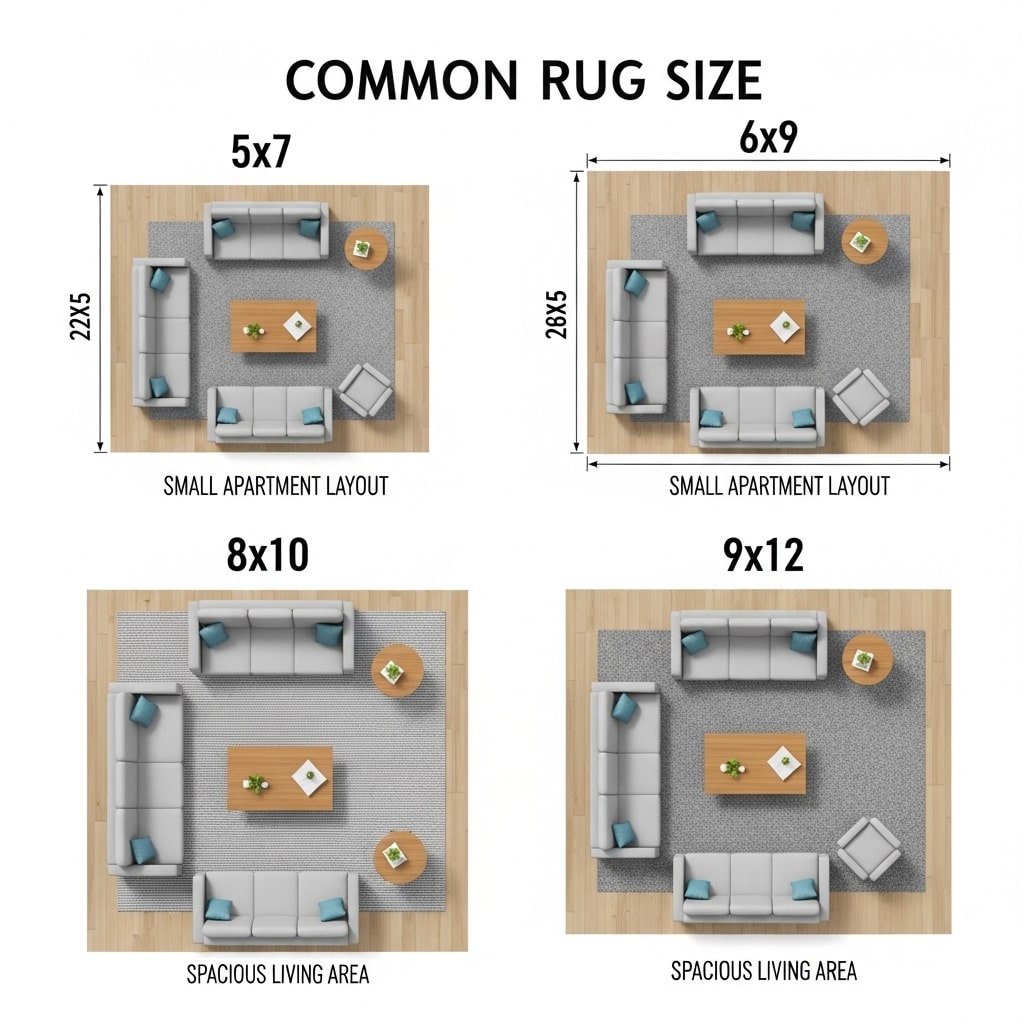
Before you roll out that beautiful rug, it helps to understand what standard rug sizes mean and how they fit into apartment layouts.
Here’s a quick reference table to start:
| Rug Size (ft) | Best For | Ideal Layout Use |
|---|---|---|
| 5’x7’ or 5’x8’ | Small living rooms | Centered under coffee table only |
| 6’x9’ | Mid-sized apartments | Front legs of furniture on rug |
| 8’x10’ | Open layouts or large apartments | All furniture legs on rug |
| 9’x12’ | Spacious living areas | Defines a full seating zone |
The goal is to visually anchor your furniture while maintaining proportion to the room size. In an apartment, this usually means choosing between 5’x7’, 6’x9’, or 8’x10’, depending on how you arrange your furniture.
Why Rug Size Matters in an Apartment
Small spaces magnify every design decision. A rug that’s too small can make your furniture feel disconnected and the room look cluttered. A rug that’s too large can crowd your walls and minimize visual breathing space.
Interior designers often say that rugs “define zones” — especially in open-plan apartments where the living, dining, and kitchen areas flow together. A well-chosen rug instantly creates boundaries and brings harmony to your layout.
Pro tip: Always leave at least 8–12 inches of floor space between the rug edge and your walls. This gives the illusion of a larger room and prevents a boxed-in feel.
1. Measure Your Living Room — Then Subtract a Little
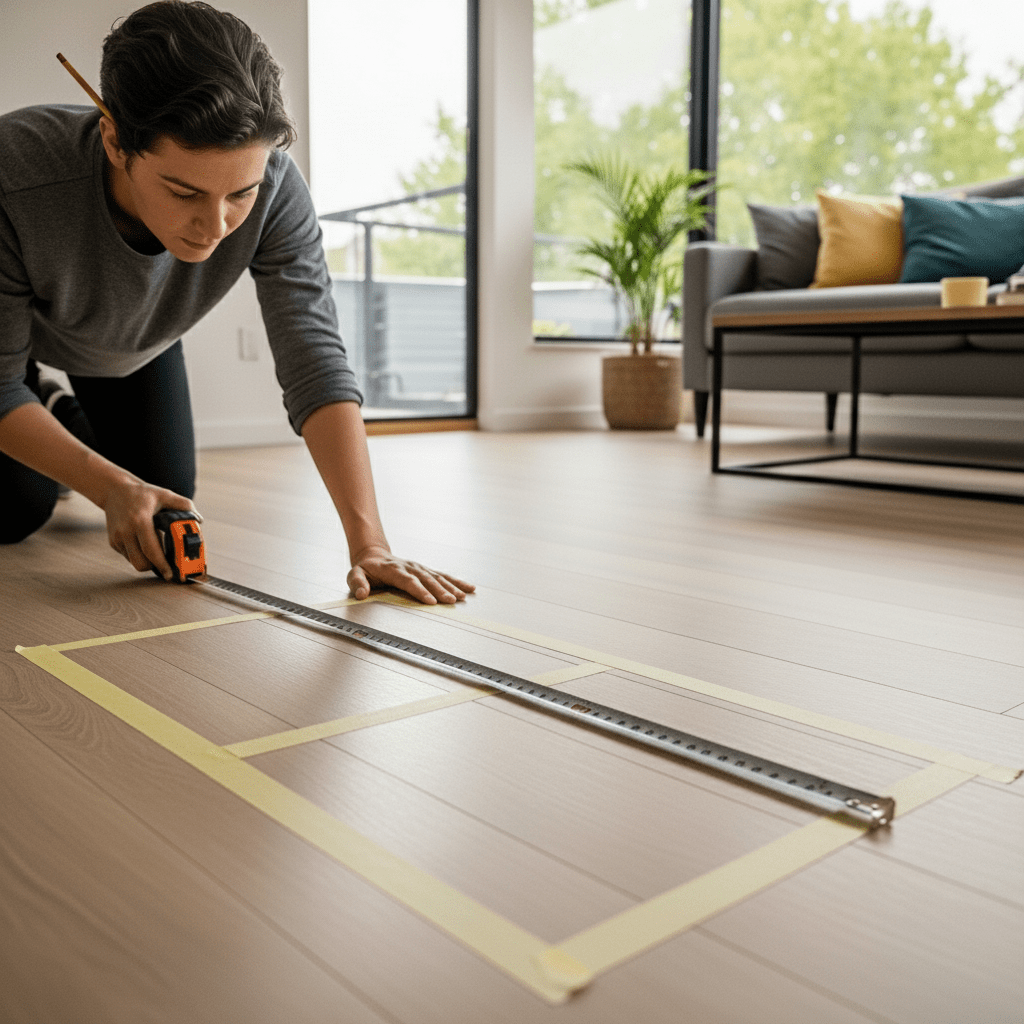
Grab your measuring tape before shopping. Measure your living room’s length and width, then subtract about 12–18 inches from each side.
This gives you the maximum rug size that fits comfortably without covering the entire floor.
For example:
- A 10×12 ft room → Choose around an 8×10 ft rug
- A 9×11 ft room → A 6×9 ft rug fits best
If you’re renting and can’t make structural changes, this trick gives your apartment that “custom-designed” balance without taking up visual space.
2. Decide Your Furniture Layout First
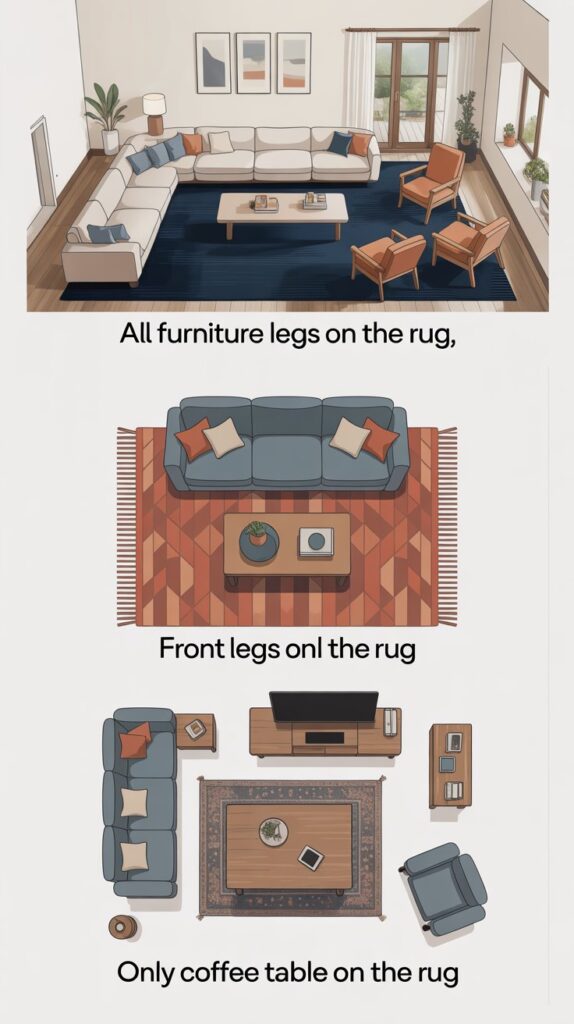
Your rug size should fit your furniture, not the other way around. Depending on how your living room is arranged, here are three designer-approved layouts to consider:
a. All Furniture Legs on the Rug
Best for: Spacious apartments or open layouts
- Creates a unified, luxurious feel.
- Works beautifully with 8×10 or 9×12 rugs.
- Ideal when you want to visually anchor a large space.
b. Front Legs Only on the Rug
Best for: Medium or narrow living rooms
- A popular choice for apartments.
- Keeps pieces connected while maintaining airiness.
- Works well with 6×9 or 8×10 rugs.
c. Only Coffee Table on the Rug
Best for: Tight spaces or studio apartments
- Keeps furniture flexible and easy to move.
- Avoids overwhelming small rooms.
- Choose 5×7 or 5×8 rugs for this look.
3. Consider Your Sofa’s Proportion
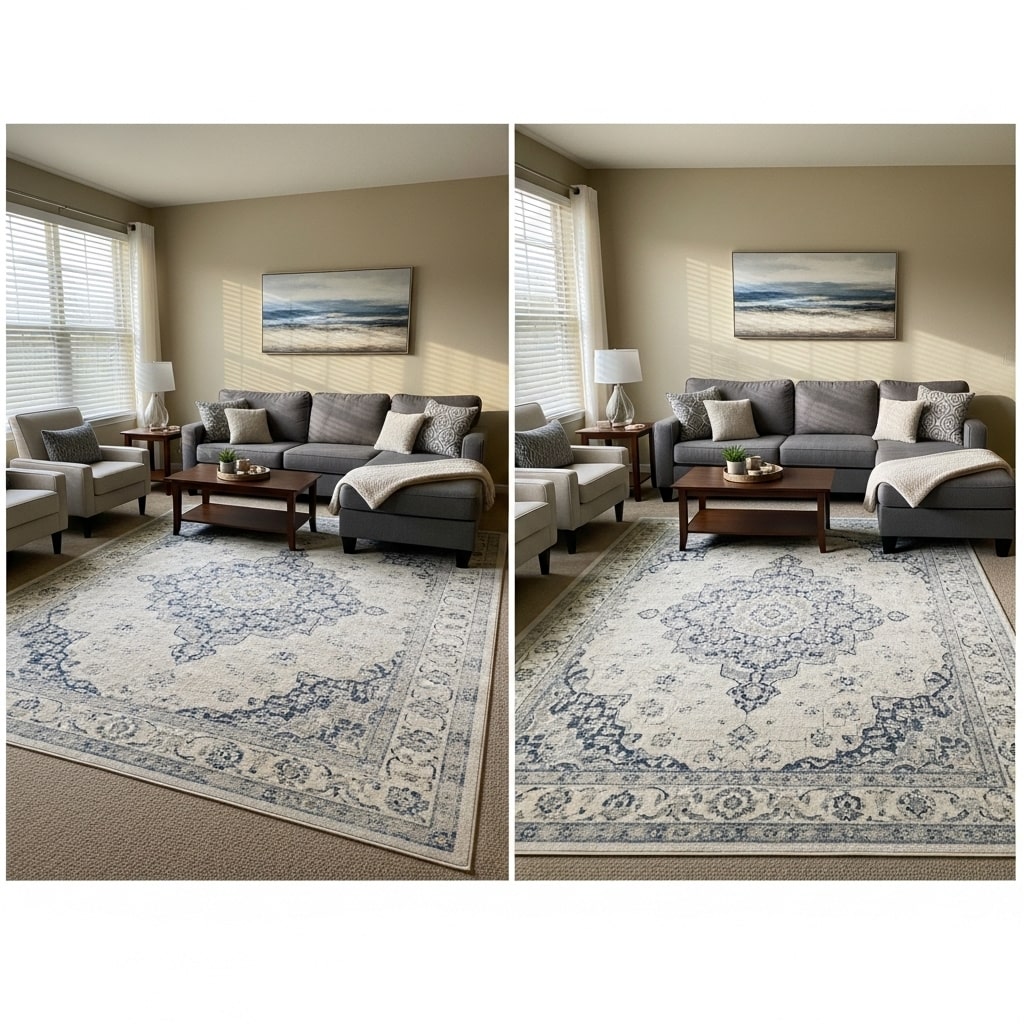
A common mistake? Picking a rug that’s narrower than the sofa.
To avoid awkward proportions:
- The rug should be at least the same width as your sofa (ideally 6–8 inches wider on each side).
- If you have a sectional sofa, ensure the rug extends past both arms to ground the space evenly.
Interior designers like Emily Henderson emphasize this balance as the key to making your space look intentional rather than improvised.
4. Layering Rugs: A Space-Saving Design Trick
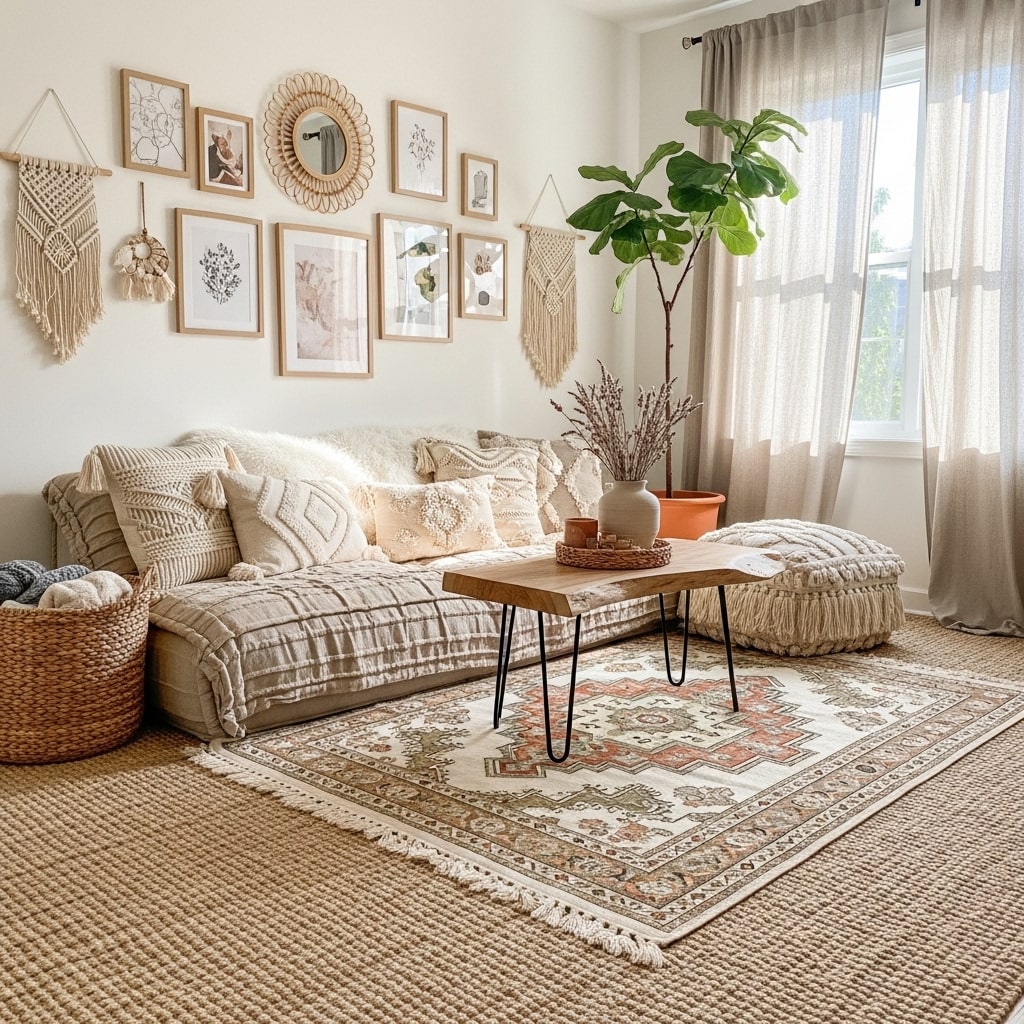
Apartment dwellers often struggle with limited floor area and budget. Rug layering offers a stylish workaround:
- Place a large neutral jute or sisal rug as a base.
- Add a smaller patterned rug on top to define your seating area.
This technique not only adds depth and texture but also allows flexibility — you can swap the top rug seasonally without redoing the entire room.
(Tip: A 5×7 rug layered over an 8×10 base creates beautiful contrast in apartments.)
5. Match Rug Shape with Room Flow
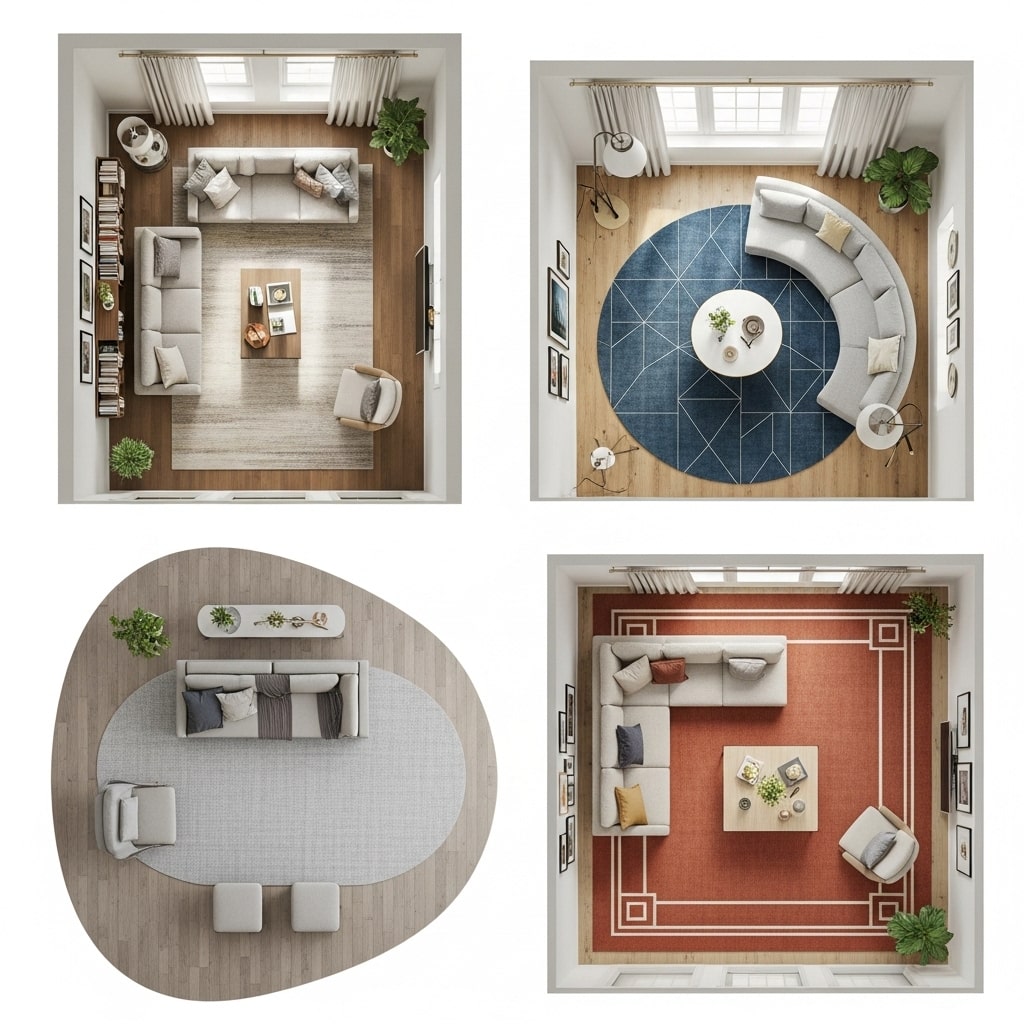
Rectangular rugs are most common, but in apartments, shape can make a big difference:
- Round rugs soften angular layouts and work well under circular coffee tables.
- Oval rugs help elongate tight or narrow living rooms.
- Square rugs suit symmetrical furniture arrangements or compact lounges.
For example, if your sofa and chairs form a tight square around your coffee table, a 7×7 square rug can visually expand the room better than a rectangle.
6. Material & Maintenance Matter
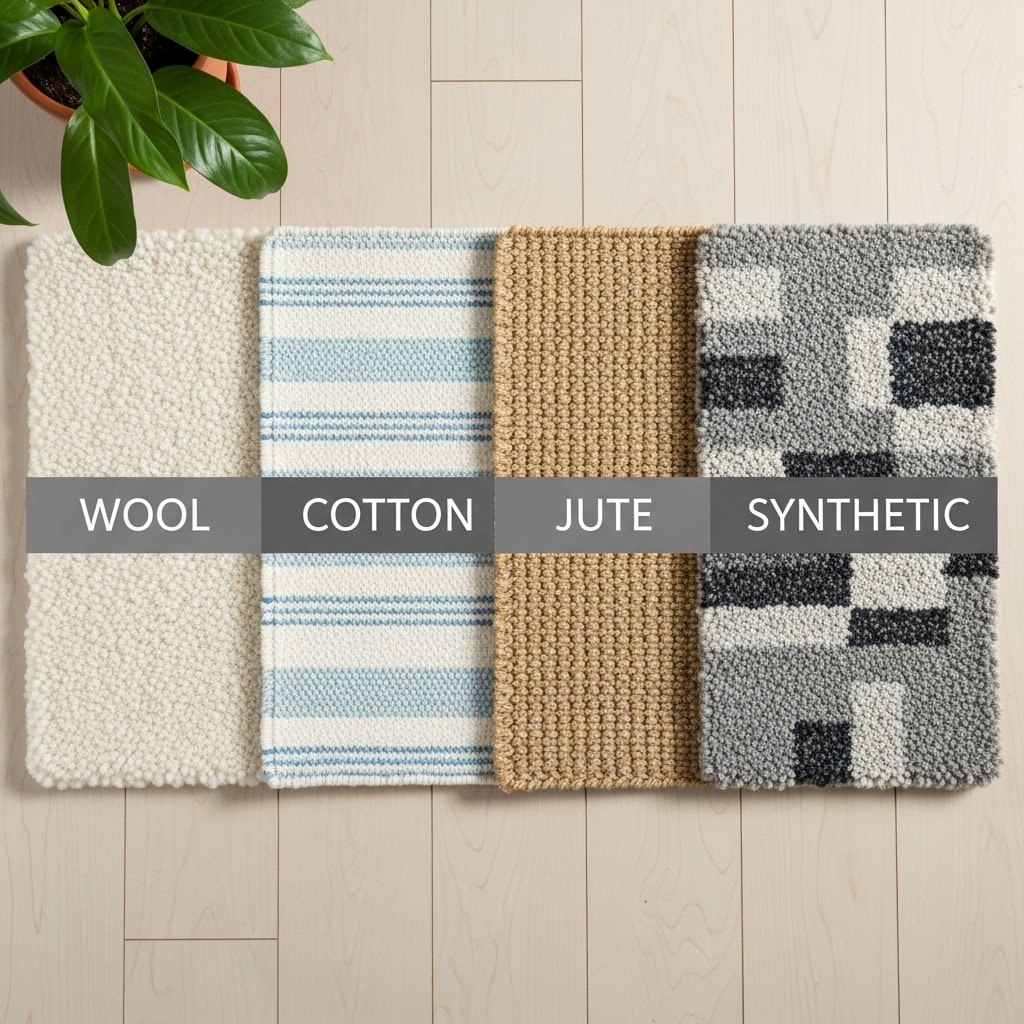
In apartments, rugs often multitask — absorbing sound, defining zones, and adding warmth. So, think beyond aesthetics:
| Material | Best For | Maintenance |
|---|---|---|
| Wool | Cozy, warm apartments | Easy to clean, durable |
| Cotton | Light, airy spaces | Machine-washable |
| Jute/Sisal | Natural, minimal decor | Spot-clean only |
| Synthetic (Polypropylene, Nylon) | High-traffic or pet-friendly | Stain-resistant |
If you live in a rental with limited cleaning options, synthetic blends offer style without stress. They’re lightweight, affordable, and easy to replace when moving.
7. Use Visual Tricks to Make Small Rooms Feel Bigger
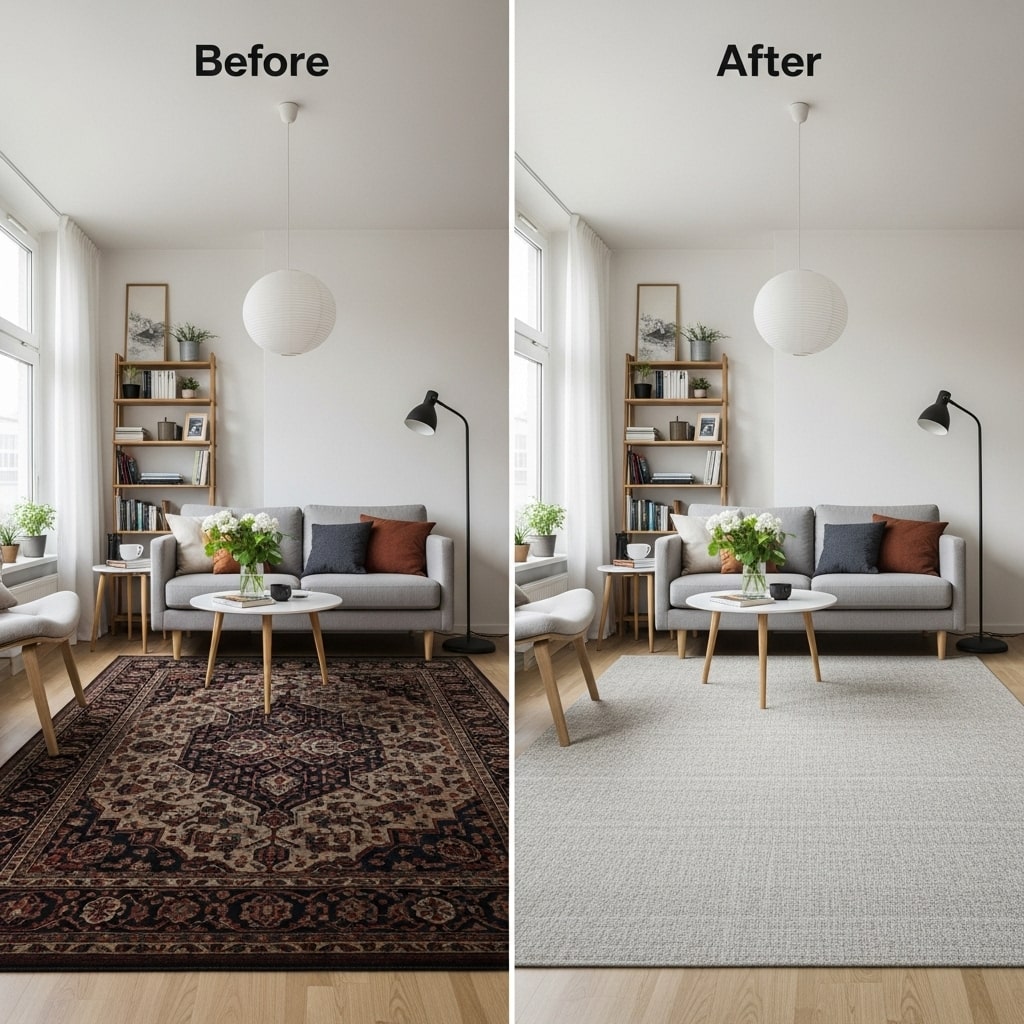
Here are a few designer illusions that can transform your apartment visually:
- Lighter-colored rugs (beige, gray, cream) make rooms feel airy.
- Large patterns expand the sense of space; small, busy prints can make rooms look crowded.
- Align the rug parallel to the longest wall to draw the eye lengthwise.
- Avoid dark rugs with heavy borders — they visually shrink the floor area.
(Bonus: Try matching your rug with curtain or throw pillow tones for a cohesive, layered look.)
8. Budget Smart: Quality Over Size
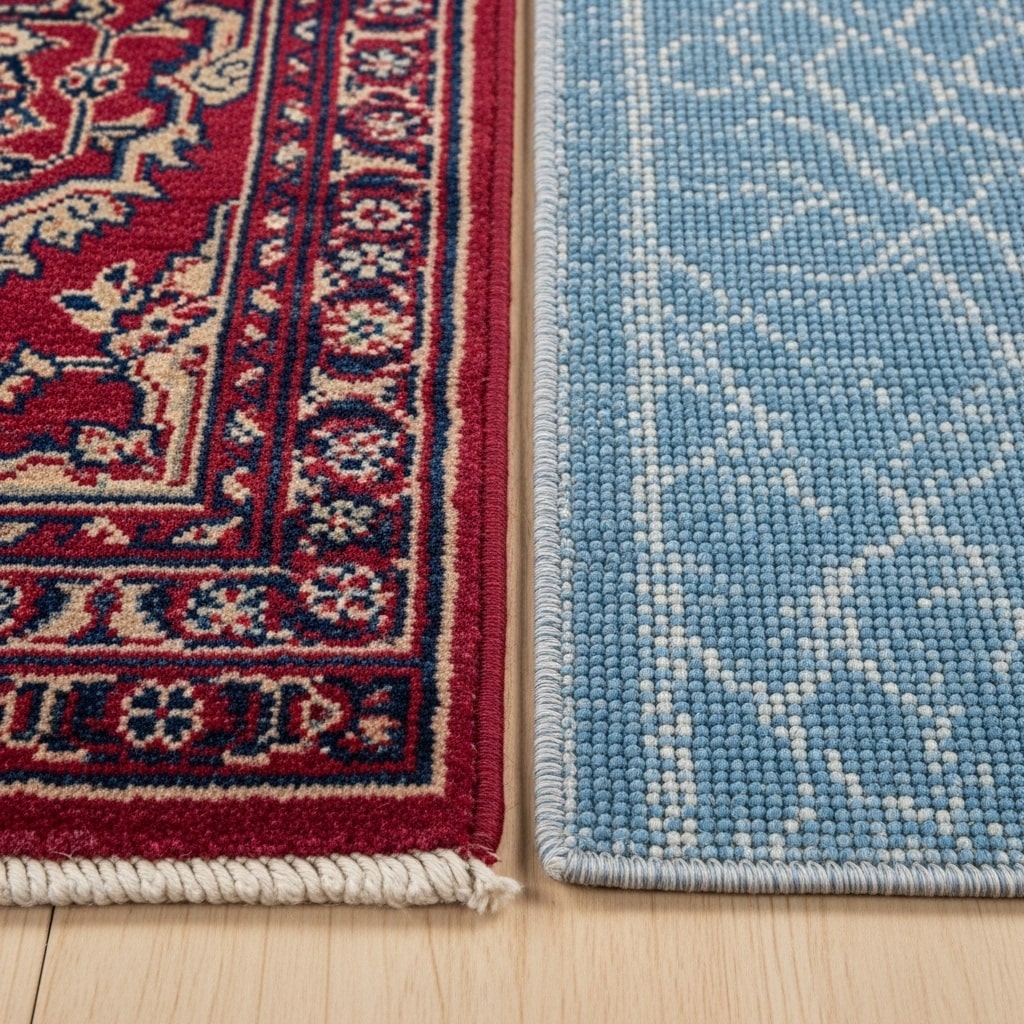
If you’re torn between buying a large, low-quality rug or a smaller, high-quality one — go for the latter. A well-crafted rug instantly elevates even the simplest apartment decor.
Plus, investing in a durable wool or high-quality synthetic blend ensures it lasts through multiple moves, making it more cost-effective long-term.
Conclusion: Finding the “Just Right” Rug Size for Your Apartment Living Room
Choosing the right rug isn’t about following rigid rules — it’s about creating flow, comfort, and proportion that make your space feel like home.
Remember:
- Measure your space first.
- Match the rug to your furniture layout.
- Leave enough floor space around the edges.
- Think quality and proportion over price or size.
Once you’ve nailed these steps, your rug won’t just cover the floor — it’ll complete the room.
Ready to Redefine Your Space?
Now that you know how to choose rug size for living room in an apartment, it’s time to bring your vision to life.
📍 Explore our post on Cozy Small Apartment Decorating Ideas
💬 Share your rug success story in the comments below!
🛋️ Or tag your living room transformation with #SavyHomeStyle — we’d love to see your space!

